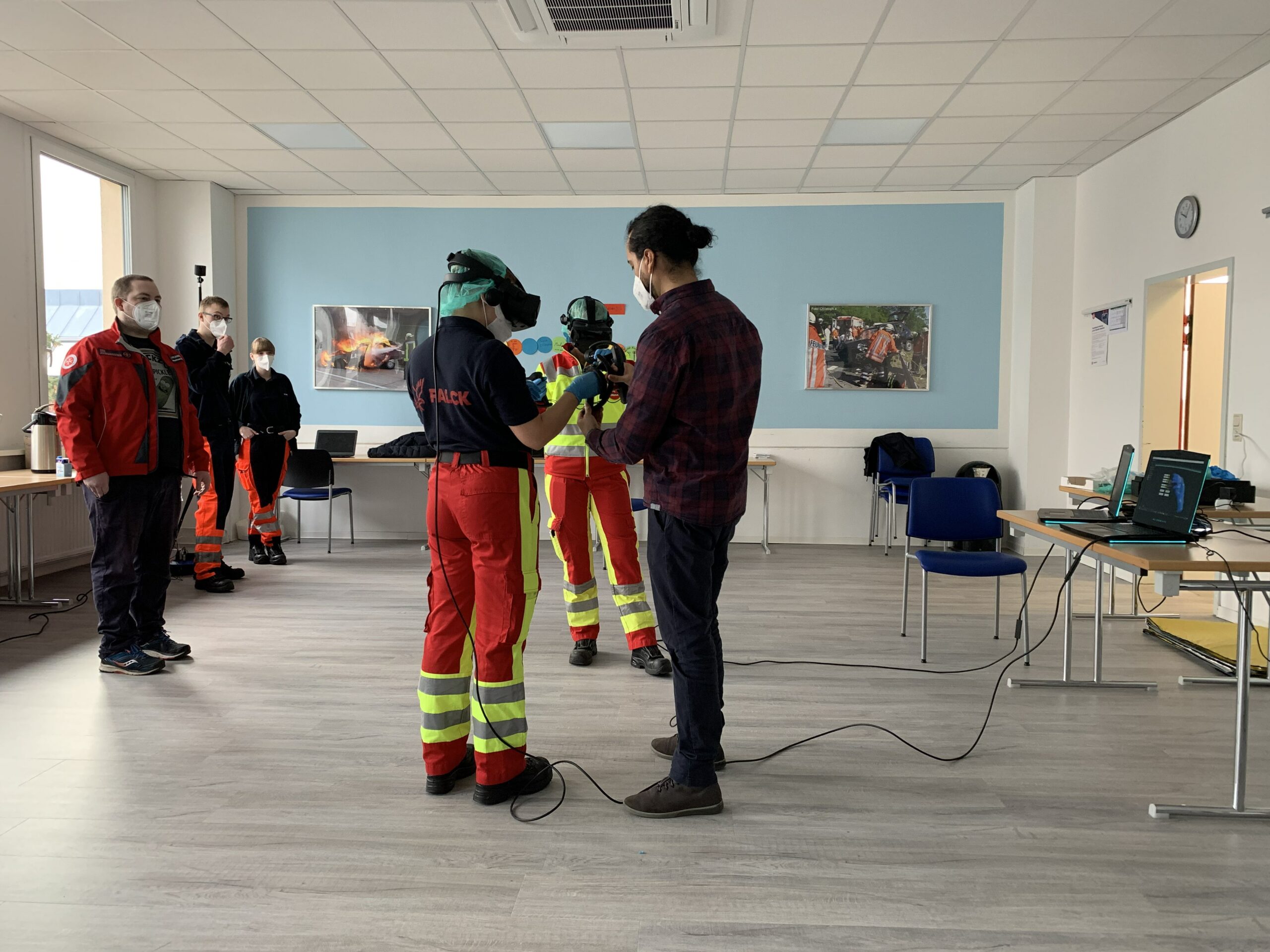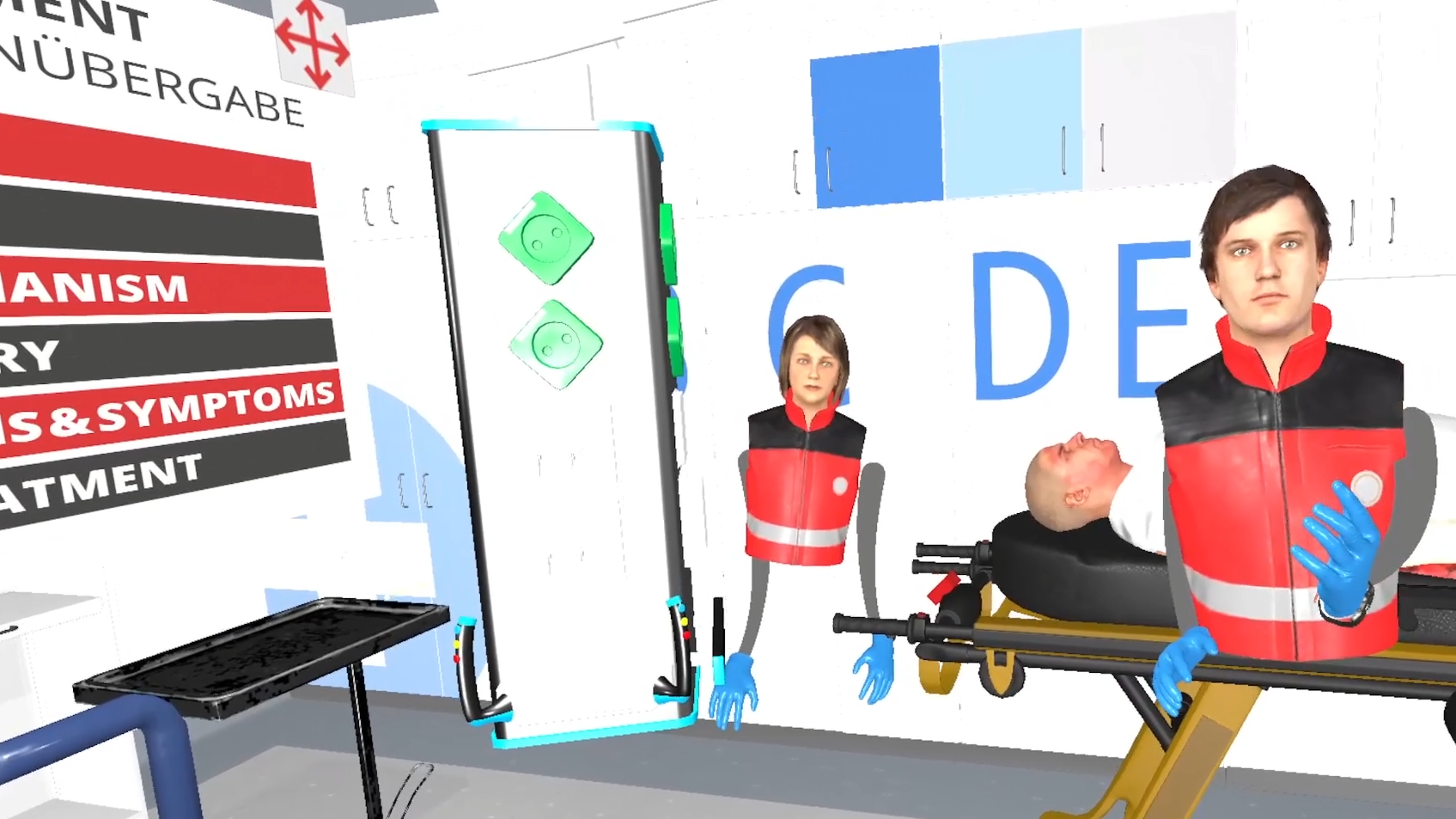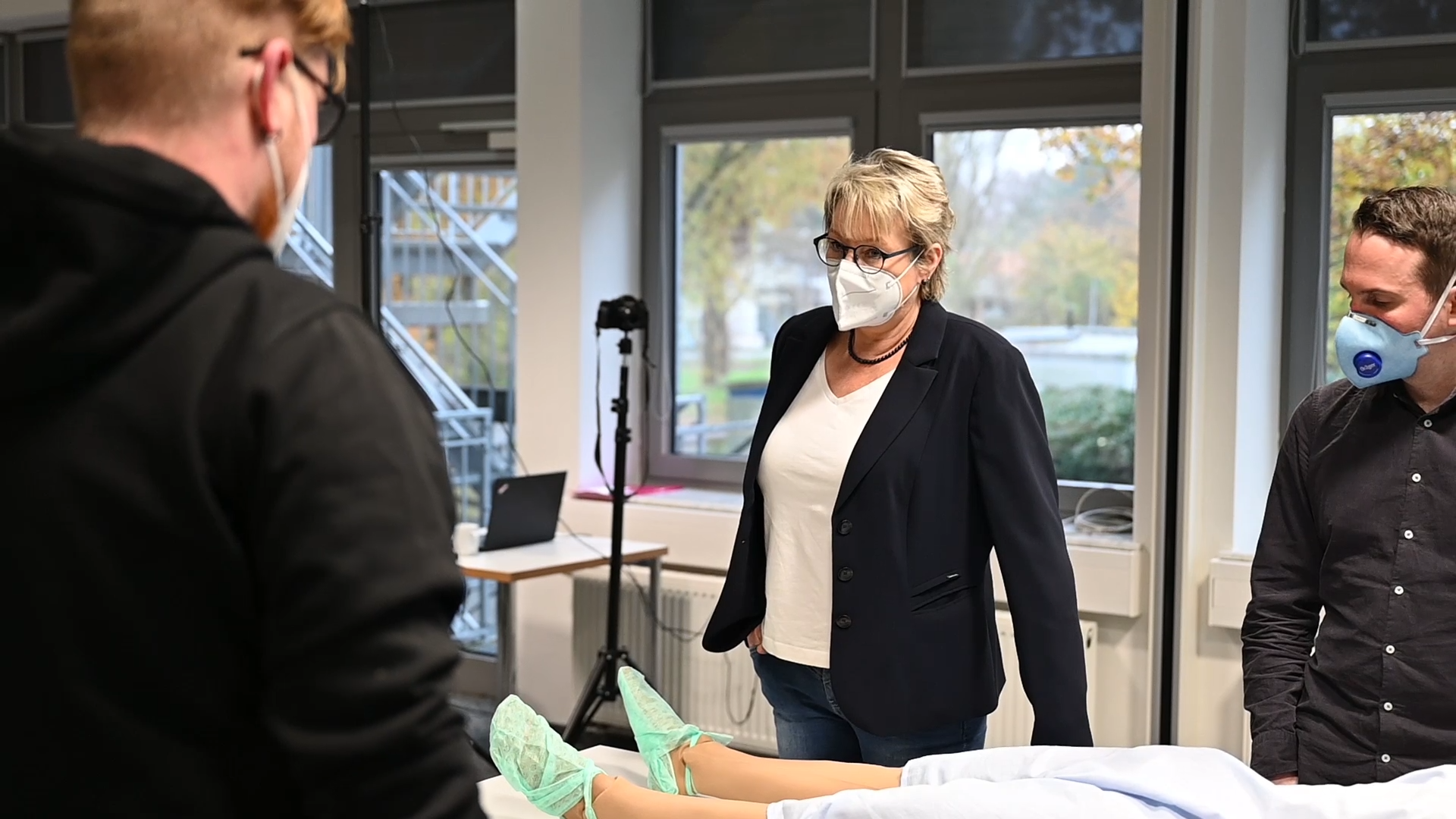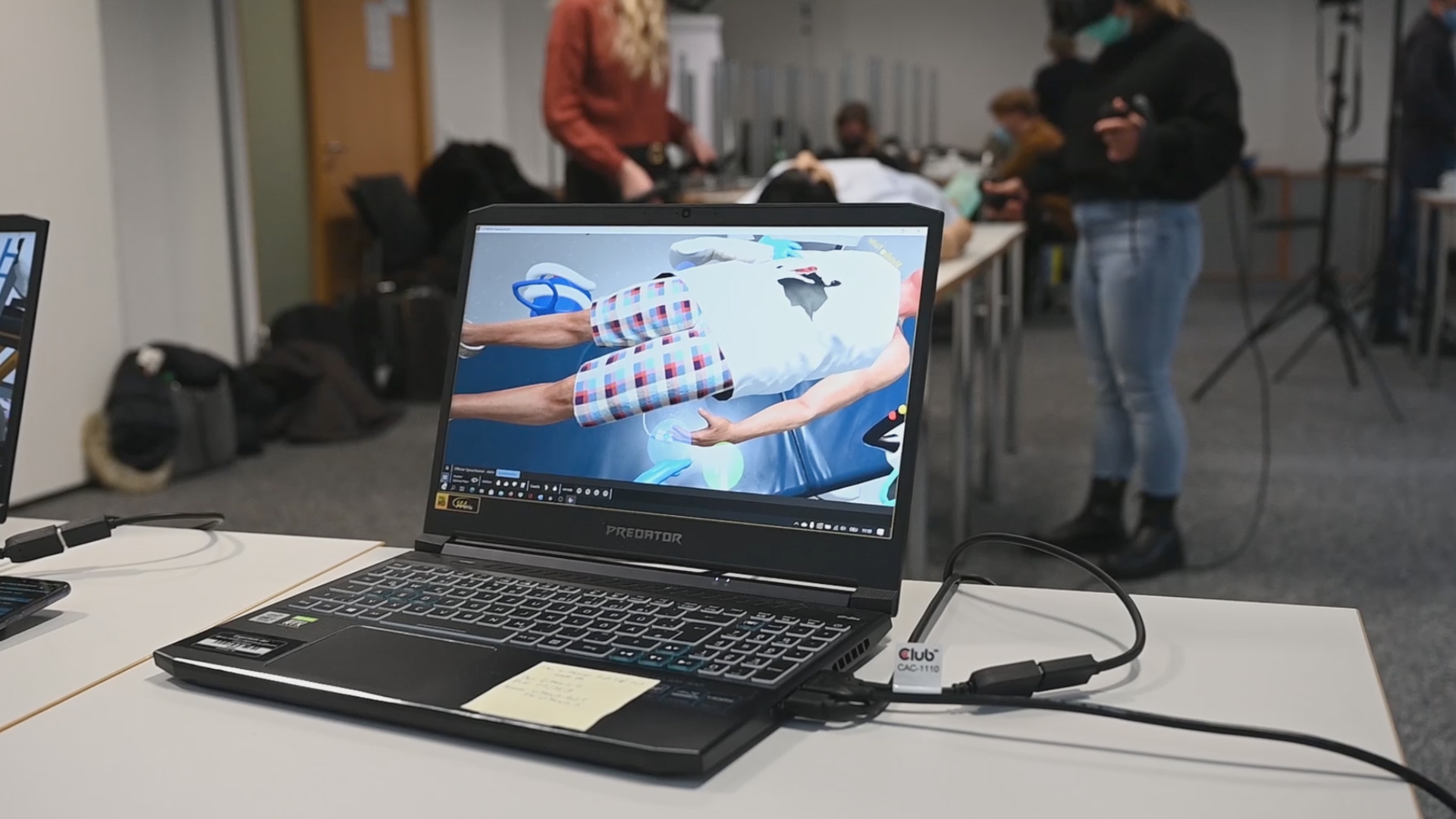The conclusion of the ViTAWiN research project is approaching. All the more we are happy to publish the first project trailer explaining the project topic and showing the interdisciplinary cooperation of the consortium members.
With the aim of developing new training systems for emergency paramedics and emergency nurses, the consortium worked with many professions. After three years of project duration, a lot of commitment has gone into the implementation.
"In the ViTAWiN project we started to analyse the target groups. We held workshops and design thinking sessions at the academies with the teachers and learners to find out what the expectations and opportunities are in connecting with the technologies. Concepts were developed and medical emergencies constructed. The focus was also on the usability of the technical concepts for the teachers and learners. Step by step, we developed prototypes, tested them and tried them out at the academies with the target groups. Each time, the resulting data and insights have been incorporated into the next iterative phase to continuously optimise ViTAWiN." - Prof. Dr. Jonas Schild from Hanover University of Applied Sciences and Arts and TH Cologne, Consortium Management and Media Technology

One of the major topics in ViTAWiN was the interprofessional cooperation of emergency paramedics and emergency nurses during the treatment scenario. With our remote concept, we created a possibility in ViTAWiN for the two professions to care for the burn patient in virtual reality, independent of location but still networked.
"The remote concept means that participants can immerse themselves in the same virtual setting from wherever they are. They do individual medicine on the same patient but are hundreds of kilometres apart. This offers the great advantage that groups that will have to work together on a patient in the future, can test and train their medical competence on the same virtual patient days and weeks beforehand in the virtual setting. They already know each other when they physically meet at a real patient." - Markus Neuberger of TriCAT GmbH, media technology development

However, successful implementation in educational practice can only be achieved with the acceptance of the teachers. For this, proximity to the target groups during development is particularly important.
"If we implement something, we are interfering with an existing concept and system that may already be established with satisfaction among educational partners. The danger is to apply virtual reality where it is neither necessary nor required or even disruptive. This means that we need acceptance by the end users, which is also connected to analysing needs and requirements together with the educational professionals. In ViTAWiN, we specifically look for learning needs that we can support with our virtual environment." - Christian Elsenbast of the Fraunhofer Institute for Experimental Software Engineering IESE, Medical and Media Didactics
This satisfaction and acceptance among the education partners was our goal and have been able to work together to achieve it.
"My colleague Silvia Sommer and I are supporting the ViTAWiN project because we think it offers a particularly innovative teaching and learning concept that ties in with research. We believe that it is important for emergency nursing to be involved, also in the development of such concepts. We would like to become part at an early stage with trainees and participants in further education and thus also bring the profession of nursing into contact with research and participate in it." - Dr. Jan Landherr of the Hanse Institute Oldenburg

"Through ViTAWiN, students are exposed to new training methods. We can train rare accidents more often and are able to present sources of danger safely." - Andreas Franke from the Johanniter Akademie
"Our students get a very good teaching and learning experience. Within a short period of time they are put into a scenario they may never have seen before and see a very realistically portrayed patient with whom they can interact. Here, there is not the classic teaching situation where the focus is on skills and working techniques. Instead, ViTAWiN is more demanding, decisions are made.” - Sebastian Sachs from Malteser Bildungszentrum HRS

